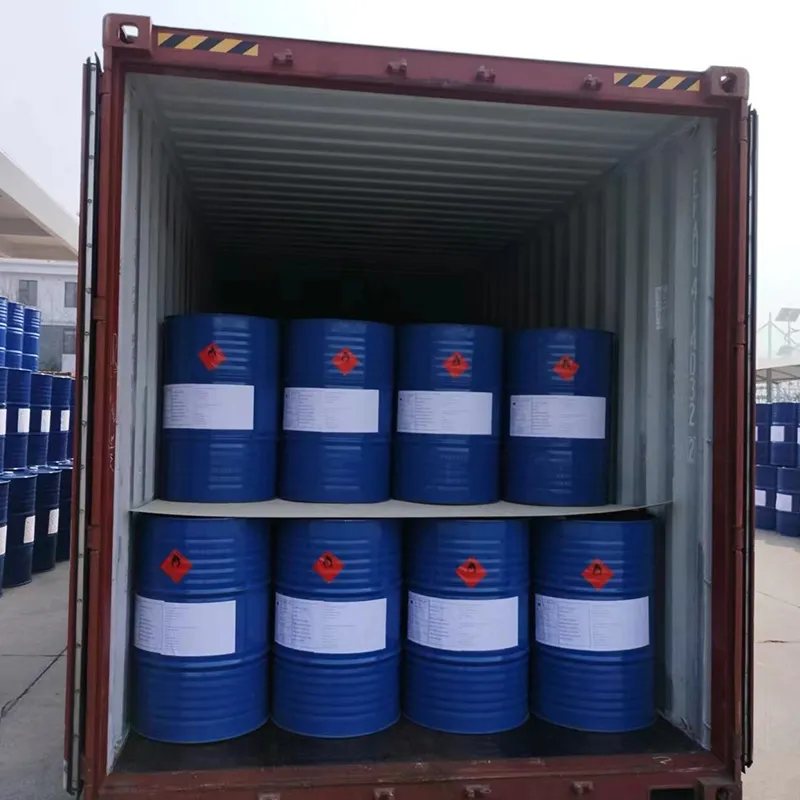
glacial acetic acid 99
Understanding Glacial Acetic Acid A Comprehensive Overview
Glacial acetic acid, the pure form of acetic acid with a chemical formula of C2H4O2, is a colorless liquid that is both a key industrial chemical and a vital component in various biochemical processes. Its distinctive features and applications make it an essential substance in numerous fields, from pharmaceuticals to food production.
Properties and Characteristics
Glacial acetic acid gets its name from its appearance. When in its anhydrous state, it appears as a clear, colorless liquid that has a pungent, vinegar-like smell. This chemical is hygroscopic, which means it readily absorbs water from the environment. In its pure form, glacial acetic acid freezes at around 16.6 degrees Celsius (62 degrees Fahrenheit) to form solid crystals, lending to its name glacial. The freezing point characteristic is significant as it distinguishes it from diluted acetic acid, which is commonly known as vinegar (a 5-20% solution of acetic acid in water).
One of the remarkable aspects of glacial acetic acid is its strong acidity, with a pKa of approximately 4.76. This allows it to function as a weak acid, reacting with bases to form acetate salts. It is a versatile solvent, able to dissolve both polar and non-polar substances, making it invaluable in organic synthesis.
Industrial Applications
Glacial acetic acid is a vital chemical in various industries. It serves as a precursor in the manufacturing of acetic anhydride and acetate esters, both of which are essential in the production of synthetic fibers, plastics, and paints. The textile industry relies on glacial acetic acid for dyeing processes and to produce materials like rayon and acetate fabrics.
In the food industry, while it is used sparingly due to its caustic properties, glacial acetic acid can be important in the production of food preservatives, flavorings, and as a food acidity regulator. The pharmaceutical industry also utilizes glacial acetic acid in the synthesis of active pharmaceutical ingredients (APIs) and laboratory reagents.
glacial acetic acid 99

Role in Biochemistry
Beyond industrial applications, glacial acetic acid has significant relevance in biochemistry and molecular biology. It plays a crucial role in the acetic acid fermentation process, which produces vinegar from carbohydrates. This process is essential not only in food production but also in the study of metabolic pathways in cells.
Furthermore, glacial acetic acid is often employed in laboratory settings for cell fixation, where it can stabilize cellular structures for microscopic examination. It is also used in histology and immunochemistry for preserving tissue samples, allowing for detailed analysis and study.
Safety and Handling
Despite its widespread use, glacial acetic acid presents certain hazards. It is classified as a corrosive substance and can cause severe damage to skin and eyes upon direct contact. Additionally, inhalation of its vapors may lead to respiratory issues. As such, proper safety protocols should be observed, including wearing appropriate personal protective equipment (PPE) such as gloves, goggles, and masks.
In laboratory settings, it is crucial to handle glacial acetic acid under a fume hood to prevent inhalation of its vapors. Moreover, because of its flammable nature, storage in a cool, well-ventilated area away from heat sources is recommended.
Conclusion
Glacial acetic acid is a fundamental chemical that has a wide range of applications across various industries, playing critical roles in manufacturing, food production, and biochemical research. Its unique properties and versatility make it an invaluable resource, though its handling requires careful attention to safety guidelines. Understanding glacial acetic acid, its uses, and potential hazards is essential for anyone involved in fields that utilize this important chemical. As research and industry evolve, glacial acetic acid will continue to be a key player in the development of new materials, pharmaceuticals, and biochemical processes, highlighting the importance of this simple yet powerful compound.
-
Understanding Synthetic Rubber OptionsNewsApr.27,2025
-
Trichloroisocyanuric Acid: Essential for Clean and Safe WaterNewsApr.27,2025
-
Sodium Dichloroisocyanurate: Key to Safe Water TreatmentNewsApr.27,2025
-
Sodium Acid Pyrophosphate: Essential in Modern Food ProcessingNewsApr.27,2025
-
Essential Water Treatment ChemicalsNewsApr.27,2025
-
Denatured Alcohol and Its Industrial UsesNewsApr.27,2025
-
The Versatile Uses of Sodium BicarbonateNewsApr.24,2025
Hebei Tenger Chemical Technology Co., Ltd. focuses on the chemical industry and is committed to the export service of chemical raw materials.
-

view more DiethanolisopropanolamineIn the ever-growing field of chemical solutions, diethanolisopropanolamine (DEIPA) stands out as a versatile and important compound. Due to its unique chemical structure and properties, DEIPA is of interest to various industries including construction, personal care, and agriculture. -

view more TriisopropanolamineTriisopropanolamine (TIPA) alkanol amine substance, is a kind of alcohol amine compound with amino and alcohol hydroxyl, and because of its molecules contains both amino and hydroxyl. -

view more Tetramethyl Thiuram DisulfideTetramethyl thiuram disulfide, also known as TMTD, is a white to light-yellow powder with a distinct sulfur-like odor. It is soluble in organic solvents such as benzene, acetone, and ethyl acetate, making it highly versatile for use in different formulations. TMTD is known for its excellent vulcanization acceleration properties, which makes it a key ingredient in the production of rubber products. Additionally, it acts as an effective fungicide and bactericide, making it valuable in agricultural applications. Its high purity and stability ensure consistent performance, making it a preferred choice for manufacturers across various industries.











